https://www.youtube.com/watch?v=DhxjT1eEpEA
Drawing Animals From Life

Hey , everybody .
Aaron Blaze is here .
And as a lot of , you know , I love to draw animals .
Uh I've been doing it for years ever since I was a little kid and you know , to get better at it , you have to draw from life .
It's no , there's no other way around it .
Um Drawing from life gives you something that photographs can't give you .
It gives you an experience that you see the animal in three dimensions .
All of these really add up to giving you a better experience .
And this is something that I've done for years and years and years and I'm always harping on it .
But obviously , drawing animals from life can be difficult because animals , they don't want to sit there like a model , sitting in a studio .
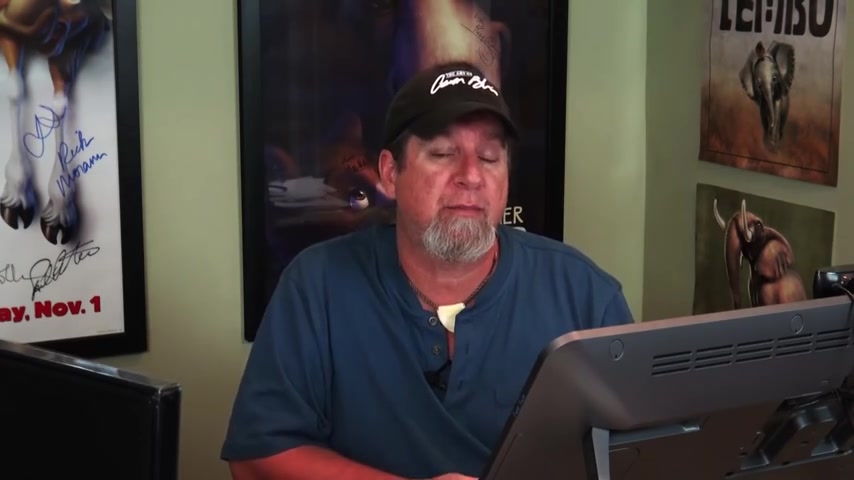
They move around , they've , you know , they've got their own , their own agenda and it's up to you to kind of follow them .
So whether you're drawing them in the wild or drawing them at the zoo or drawing them in your house .
If you're drawing your dog or cat , there's a few things that I've developed .
I've figured out over time that help me when I'm sitting down to draw animals .
So I thought I'd put together a little video today and um and talk to you about it .
So why don't we get into drawing animals ?
And some of the things that I keep in mind um when I'm drawing , OK , the first thing , especially if you're going to the zoo and you're seeing animals that maybe you don't see every day animals that you've never seen before .
So many people , the first mistake they make is they get in there and they start to draw right away .
I always , always , even though I know a lot of different animals , I'll go and I'll just sit there and I'll watch the animal .
I'm looking at shapes , I'm looking at rhythms .
I'm looking at flow , I'm looking at proportion .
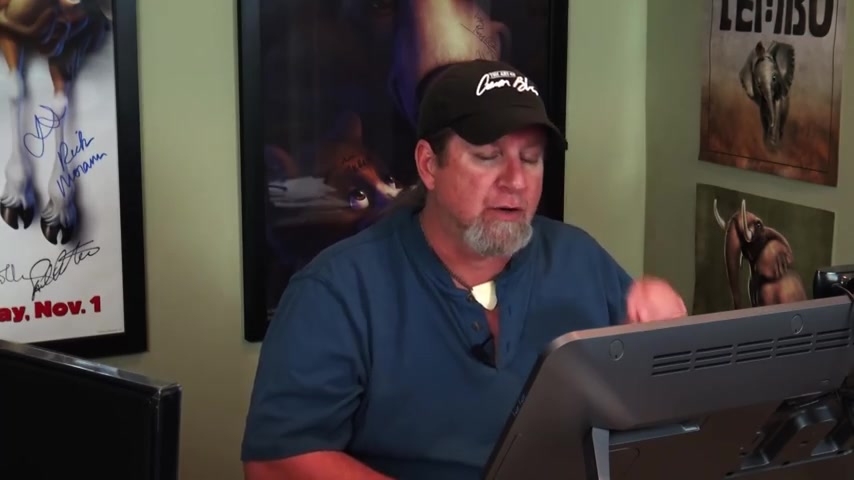
I'm looking at all these different types of things before I ever put down pencil to paper so that I can get a sense of this animal .
So it's very , very important to just sit there and just relax and just soak it in and observe .
OK .
So that's the first thing next .
So when this is kind of cool , um This is what I do when I'm about ready to draw or when I am ready to draw , I , I take a mental picture and I don't mean just going , uh you know , like that , I actually have a method that I use to get a picture in my mind and it's a , it's a weird thing , but I do it and it really works and uh maybe some of you do it .
But what I do is I'll look down and I'll look up very fast at the animal and look down again .
And what that does is it flashes an image in my head .
I'm left in my brain very quickly with that last image that I saw of that animal and I'll very quickly scribble it in .
That's the first thing I'll do .
So .
It literally is this , I'll go like that .
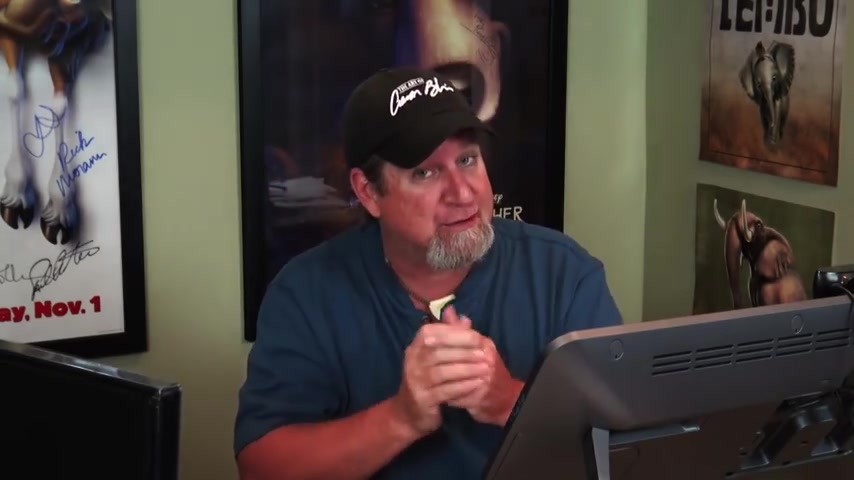
I'll look up , look down , look up , look down , look up , look down .
And if you do that , you'll be left with these little freeze frames in your brain .
I know it sounds weird and it looks weird but it works .
Trust me and more with more practice , you'll be able to get that image to freeze in your head and you can jot it down really fast and then once it's jotted down , once it's scribbled in , you can look at the animal again and start getting your details , start getting your proportions .
You can start readjusting .
But when you're drawing from life , especially with an animal that's moving , that's a great technique is just taking that mental picture that and that and it works .
Trust me .
This is another thing .
Um And I get this a lot from people so many people , especially like , uh for instance , when I'm doing my character design courses , people ask me well , will you do a design course on animals ?
And the fact is when I'm doing character design , it doesn't matter if it's an animal or a human , I'm using the same principles .
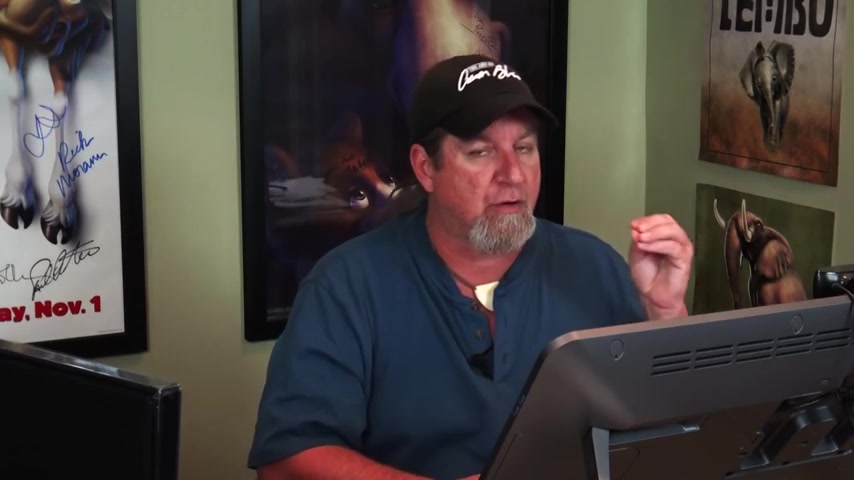
The only difference that a lot of people suffer with drawing animals and doing animal design is that they don't have the anatomy knowledge .
And so once you have that anatomy knowledge , then you just start using all the same principles .
And so it's the same kind of idea when you go out to draw animals at the zoo is if you go in there with at least a basic understanding of , of uh uh uh animal anatomy , then that's gonna help you , it's gonna give you a leg up .
And I don't mean you don't have to be an expert on rhinoceros and ostriches and tapers and all these types of things .
But they're , you'll start to discover when you start looking at animals and you start looking at animal anatomy , you're gonna start making discoveries like mammals that are four leg have evolved to have , most of them have their legs underneath them , unlike lizards like crocodiles and , and uh , reptiles like that , that have their legs out to the side and they move a little differently and they're built a little differently .
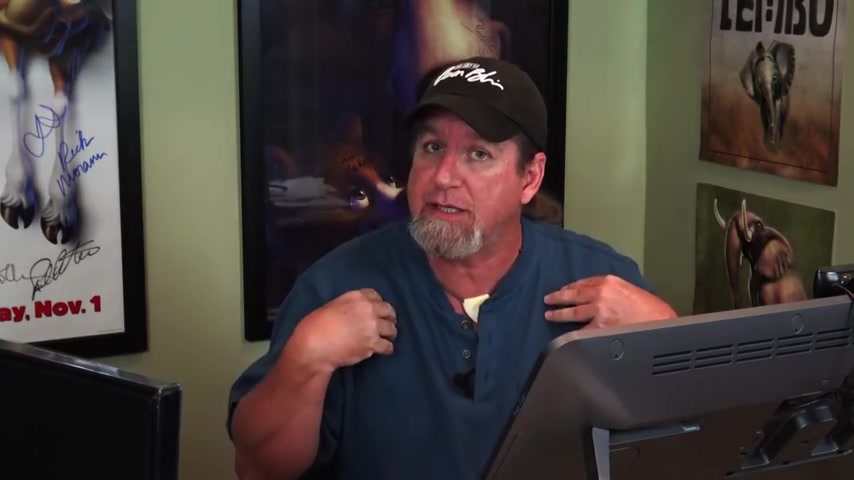
Most mammals are built basically the same .
If they're four legged , they have , you know , they have shoulder blades , they have an upper arm , they have a lower arm , they have all the same parts that we do .
They even have all of the same muscles , they're just proportioned differently .
And once you understand that , then you can start to understand when you're looking at an animal .
Oh , that's the shoulder .
Oh , that's where the shoulder blade goes .
Oh , that's where the trapez muscle is on , on all the different aspects that make up a basic , the basic anatomy of an animal .
You're gonna be able to kind of adjust that from animal to animal because it is basically the same , they all have the same muscles with very few exceptions , the same muscles , the same bones just shape differently .
And once you understand that , then you can start to apply it and that will help you with your animal drawing when you're drawing an animal that you don't , that you're not quite familiar with .
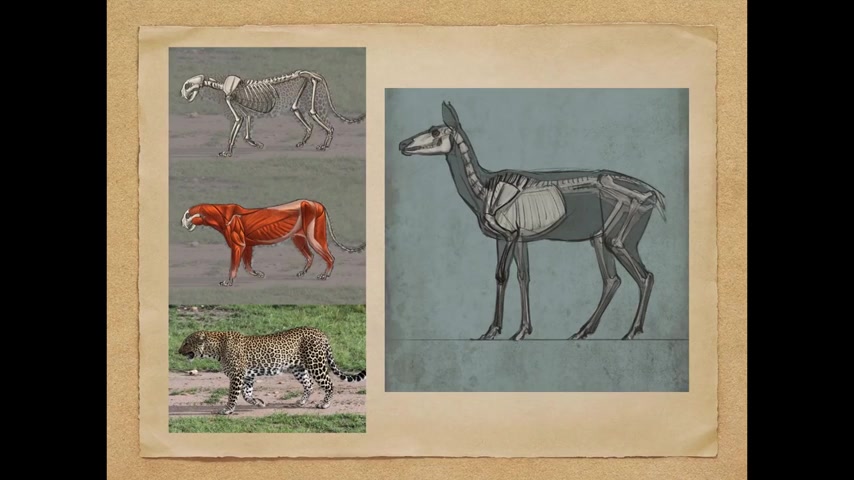
And so as we , as we're , as we're looking through this , you can see that , look at the , the leopard , for instance , at the very top .
If you look at that skeleton , you can see the shoulder blade , you can see the rib cage , you see the upper arm , the lower arm , all that kind of stuff .
They've all , they've got all the same parts that we do , but go ahead and jump over to the deer .
Well , you're gonna see , ok , well , there's the shoulder blade that there's that rib cage , there's the upper arm , there's the lower arm and actually , you know what looks like a knee on the deer is actually the wrist .
So , and if you look at the , the pelvic area , the pelvis area , all of that is the same , it's just proportioned differently .
And if we were to draw the muscles onto this deer , you'd also see that they're the same muscles as on the cat as well .
And so once you understand that , like I said , then that's gonna make your animal drawing a lot stronger .
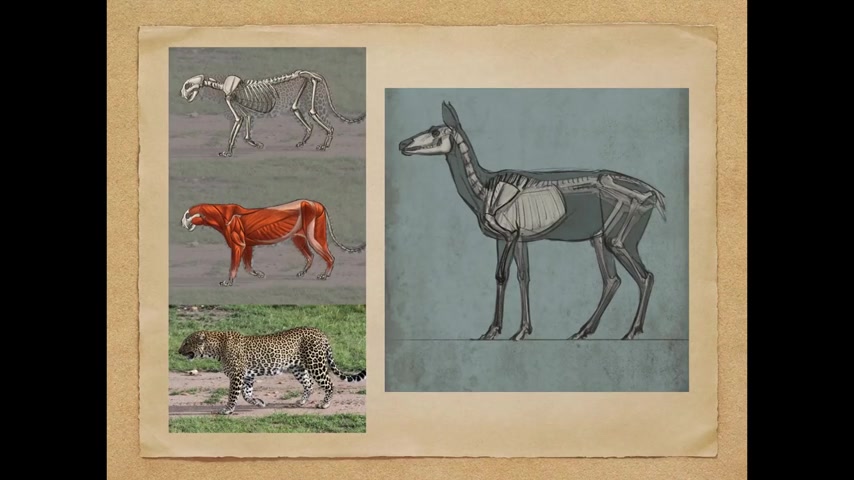
And then all you're doing when you're looking at a specific animal is looking for those things that make it specific and then you just adjust what you already know .
OK .
So the other thing is I'm always always , always very conscious of proportion .
Here are some cats that I drew , uh some Cougars and I'm always looking at head to body proportions .
I'm looking at length , I'm looking at the gaps between legs , the , the belly length , I'm looking , I'm looking at tail length to body .
I'm always always comparing all the different proportions to make sure that the , the animal comes out accurate .
So many times someone will start drawing , let's say , at the head and work their way back and they end up with something that either has a tiny head or a giant head .
And if you kind of start at one end and then start jumping around , which is what I do , I start jumping around just for that reason , I can , I can better control my proportions .
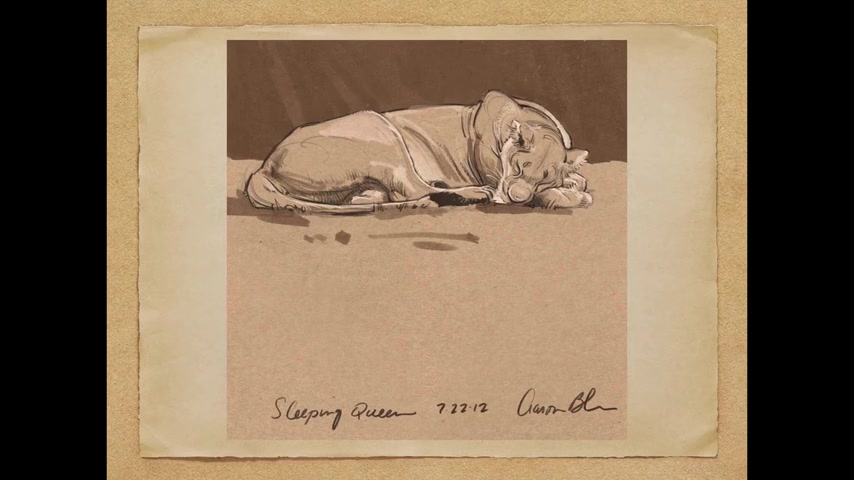
And so I'm always , always making sure that proportions are correct .
This is the , the other thing I'm always looking for the big shapes first and then , you know , just like anything else , you go broad and then you start working towards the details .
And it's the same thing with drawing animals at the zoo .
In this case , here's the sleeping lioness that I drew .
The first thing that I I would have looked at is just that big overall oval shape sitting on the ground .
And then from there , I would get into breaking it down with to , to the rear leg shape the shoulder shape with the head shape in there , slowly breaking it down .
Then within the head , I find the eyes and I find the nose and I find the ears , it starts start broad and work towards the work towards the details .
It's the same thing here , everybody's seen , you know , and you start with the ball and then add the details .
Well , there's truth in that .
OK ?
And so in these bare head drawings that I did , all of these really started with a circle when I first start drawing sitting .
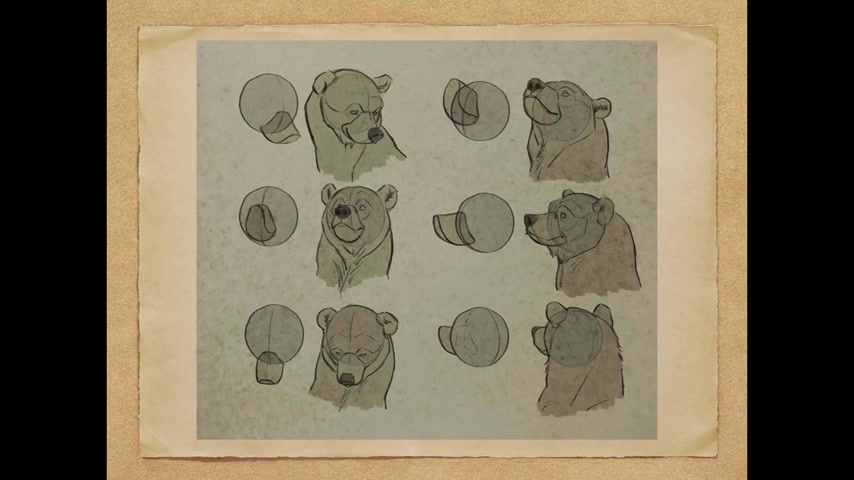
When I first sit down to draw , I start with that circle and then I start adding the parts and it goes for the whole body as well .
OK .
The other thing I do is I'll break up the body into different sections .
The reason I do that is one , it will help proportion , help with proportions like we talked about earlier , but it's easier to control the drawing when I'm thinking about the different parts .
And what I mean is , um I'll usually think about the head , the neck , the shoulders and , and front legs , the body , the hips and back legs , and then the tail .
I think of those as all separate elements .
Keep in mind I want to make sure that they flow together .
But I always , I always kind of see the animal in these , in these distinct segments .
It doesn't matter what kind of animal it is .
I'm always looking for the hips and back legs , the , the , the body , uh the shoulders and the front legs , then the neck and then the head .
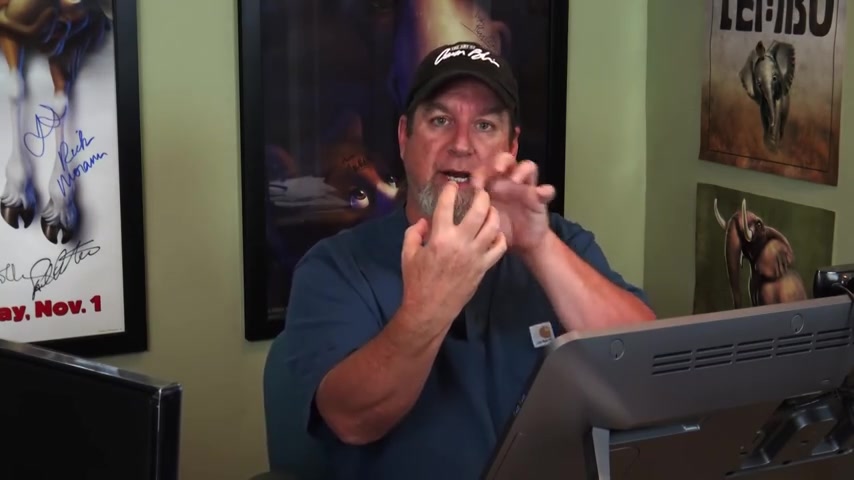
And one of the other reasons I think about that is for another point that we're going to get into in just a minute is that these are major parts of the body that will overlap .
And so when you have foreshortening a lot of times those are the shapes .
It's the , it's the hips and rear legs , the midsection , the shoulders , those are the shapes that you're gonna see as overlapping shapes .
OK ?
And we'll get into that in just a second .
The next thing I can't tell you how many people get in there and they just start drawing so tight , get in there and don't , you know , don't be afraid to mess up drawing on location .
It's not about creating a masterpiece .
It's about observing and recording and adding to your visual library that , that library that you keep in your brain .
So many people ask me , well , how do you , how , how do you draw cats , you know , out of your head ?
How do you draw horses out of your head ?
Well , it becomes from sitting there and observing them and drawing them over and over and over again and automatically it just starts to record in your brain .
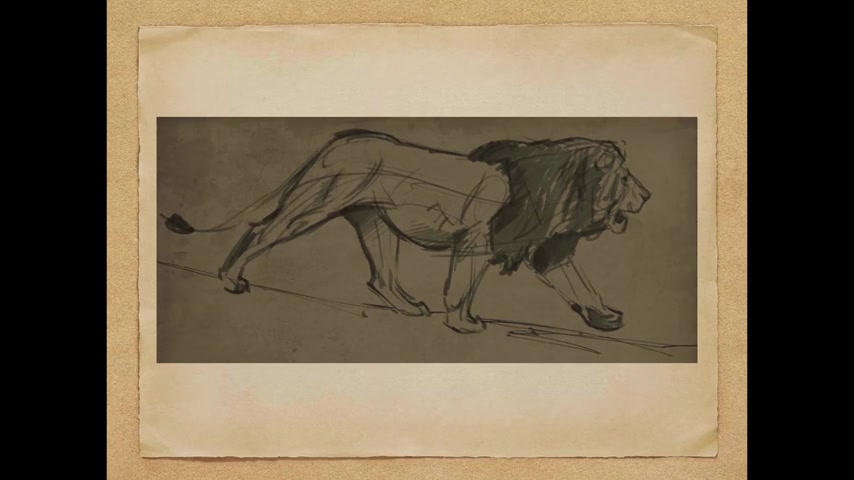
Now , I've done tons of bad drawings and it's so it's not really about doing great drawings , it's about recording the information .
So that eventually down the road , you do start to see the proportions correctly .
You start to feel the details , you start to understand how to put that animal together without actually having to see that animal in person .
And so all of that starts with being loose .
I try to find the flow .
I try to find the shape .
I start broad and I work to towards the details .
Here's an image of a lion that I drew .
This is a lion that I saw on location in Africa .
And you can see the very first line I drew right through that body .
You can see that s shape and I wanted to build everything on top of that .
Don't worry about the details , those will come later , draw loose , draw broad and then you can attach the details later just like I was just talking about with the male lion that I just showed , I try to find flow and rhythm through the body .
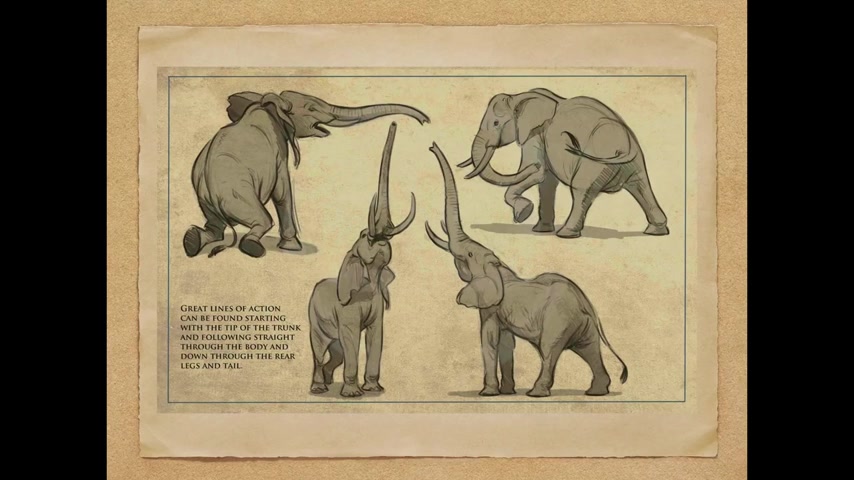
Try to find that gesture because then that it's gonna , it's gonna give your drawing grace .
It'll give your drawing fluidity and you can attach details to it .
So for instance , these are some elephant drawings that I did and as big and bulky as elephants are , um one would think that , well , it's hard to find a nice gesture , a nice rhythm through their body .
But it's , it's actually just the opposite , especially with their trunk , that trunk provides them just this beautiful uh uh fluidity through their body .
And you can see through these drawings .
This is what I was trying to do .
Look at the drawing in the upper left , you know , starting with the , the back legs , it flows right into the spine which flows up through the head and right out the trunk .
And with the other ones with the trunks raised up in the air , you can see the same thing and then the image with the in the upper right , you can see , you know , starting with the trunk or the tail , you can go either direction , it just creates this kind of spiral circular pattern that just goes right through the body .
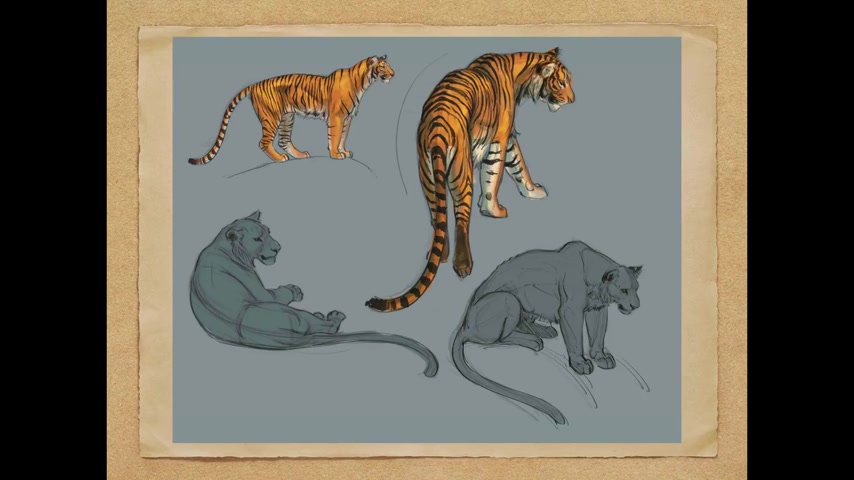
And so I'm always looking for that first so that I can attach the details onto it .
It's the same thing with drawing this tiger .
Um Quite often , I'll , I'll change the position of the tail to match that line going through the body .
So I can get this fluidity moving through .
And you can see that's what I've done here in a couple of instances , especially the , the tiger on the lower left .
I really wanted this S shape going through the body right up into the eyes .
And so you can see that there .
And then the , the , the one that's in color in the upper right , same thing I wanted this s shape going right up through the body .
So look for the fluidity , look for that line of action going through and then start attaching the details onto it .
Another thing that would help that really helps , especially because you are , you're , you're looking at animals that are moving and especially with four legged animals , it's hard to understand what the foot placement might be .
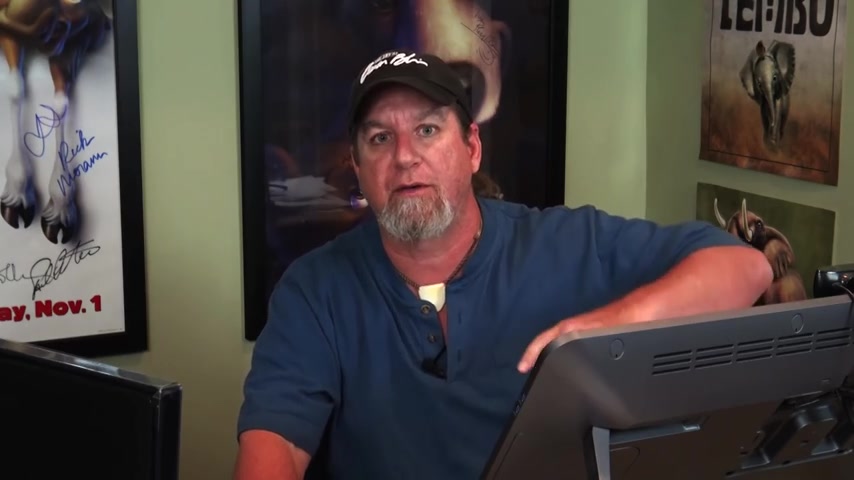
So if you go in there with a basic , a basic knowledge of animal locomotion and the way that they walk , um then that's gonna help you because if you know that the right foot is on the ground and the left foot is reaching forward , then as an animator , I know that , OK , if the right foot is on the ground and the left foot is reaching forward , that means the left rear foot has just come forward , it is on the ground and then the rear right foot is , is on the ground .
But further back , I automatically know the placement of those feet just based on where I'm placing one or two other feet .
And so if you understand that , then it really helps with posing , you can get more accurate posing , especially with an animal that's in action .
Well , obviously if it's an action , a sleeping animal , you don't have to worry about it .
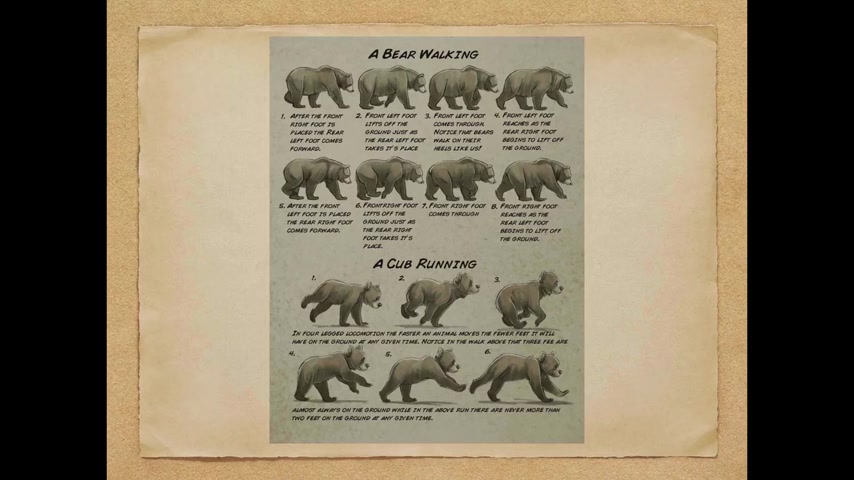
But here , for instance , you can see as we move through these bare walk cycles and the running , there's very specific places that the feet land or , or when they're off the ground that are important to make that pose accurate .
OK .
Um The next thing especially when you want to draw for shortening , um I use overlapping shapes to keep the drawing from flattening out .
Now , if you'll remember when we were talking about breaking the animal up into sections , this is where this really comes in handy .
And if you look just like I broke it up before we're looking at the head , the neck , the shoulders and arms , the midsection , the hips and back legs and then the tail look at how they all overlap .
These are the cues that will give your drawing depth .
OK .
Those are the big overlapping shapes and you can really see it here with , you know , with the hips and back legs , moving behind , moving forward or going back into space .
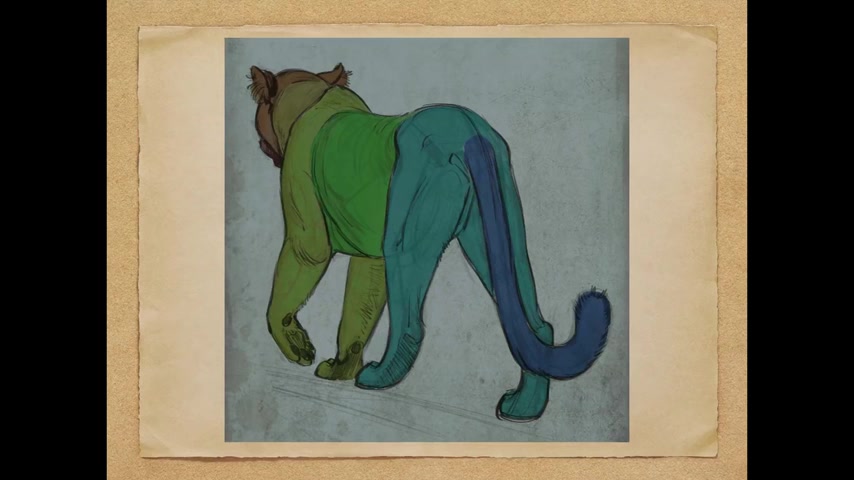
We have the trunk in the back and then it , it overlaps with the shoulders and the front legs and then the neck and then the head that's really extreme , but it really shows what I'm trying to talk about .
And so when you think about the animal in those terms , it's really gonna make it a little bit easier for you to draw that depth .
Now , it's important also not to , you know , to make sure you're not drawing these really rigid segments , you want to make sure that it flows together .
But if you think in these terms , then it's gonna help your drawing .
Here's another one that's not completely color coded , that's kind of the same thing .
And you can see that this is where I'm , you know , in drawing this line , I was thinking about the different sections of the body , from the tail to the hips and back legs , the midsection of the body , shoulders and front legs .
Um Well , in this case , the main instead of the neck and then the head , you can see all these shapes overlap .
Now , the next thing I want to talk about is perspective .
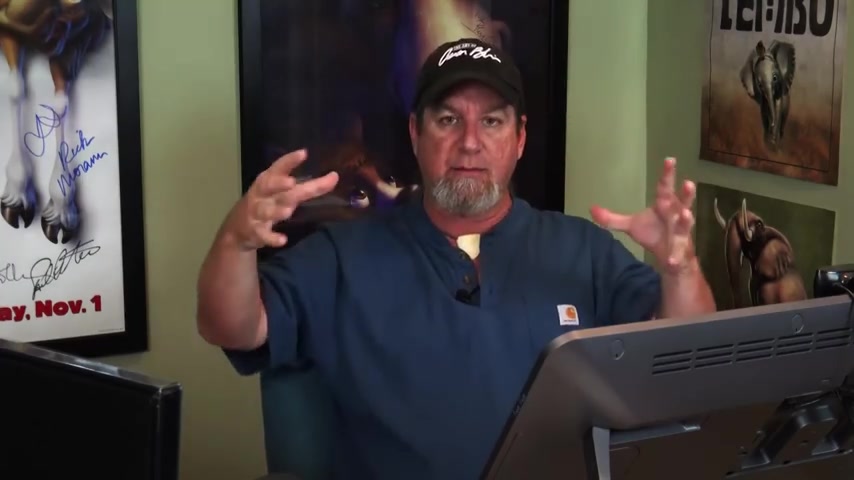
This is another thing that people get wrong a lot and um you get so caught up in trying to find the details of the animal .
You forget that that animal is sitting in space and it's sitting on a plane which is the ground or maybe you're looking up , it's on a cliff or something like that .
But you want to make sure that you have that perspective right .
In this case , I'm just showing that , you know , you know , an animal goes back in space , those hips are going to line up with the shoulders .
If you , you know , there's perspective affects everything , not just , you know , so many people think about perspective and they think about ok , horizon lines and vanishing points and buildings that , you know , recede into the sky or recede into the distance .
But the same thing applies .
If you're drawing people or animals perspective of applies , you know , I have a line that goes across , you know , that connect my eyes that connect my nose that connect my mouth .
And if I move my head , all of that moves and it's the same thing with animals as they move their heads , their perspective is going to change .
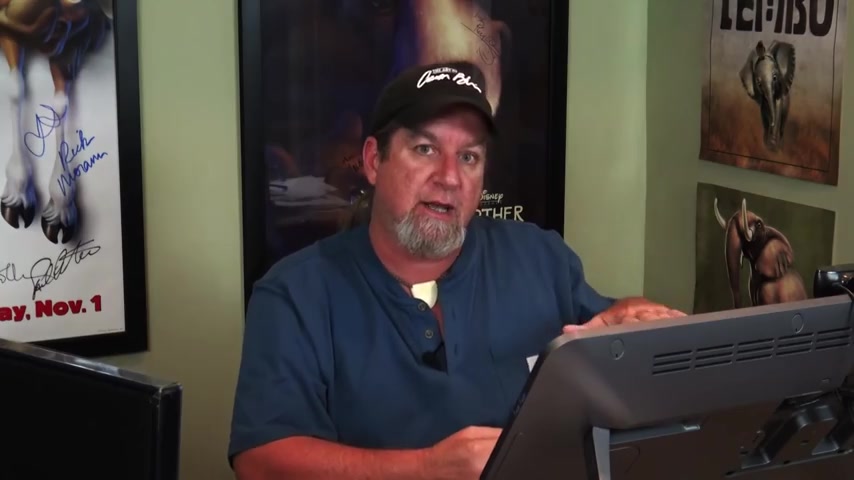
So you want to make sure that you keep an eye on your perspective , you have them sitting on the ground and you're getting all the angles correctly and all the different parts line up within those angles .
OK ?
The next thing uh and this is something that I picked up in my animation career , getting clear silhouettes will help tell the story of your drawing .
And what I mean is here's some more elephants that I drew and I purposely on these , on these particular drawings , I made sure to draw them so that you could see every leg , all the parts were clear and told it so that you could tell the tell the see the story , you could see the pose , understand what's going on all just from a black shape .
That way , if you can understand that , then all the details that you throw inside are going to be just that they're gonna be details and it's going to add to the , they're gonna be frosting , it's gonna add to the flavor of the drawing .
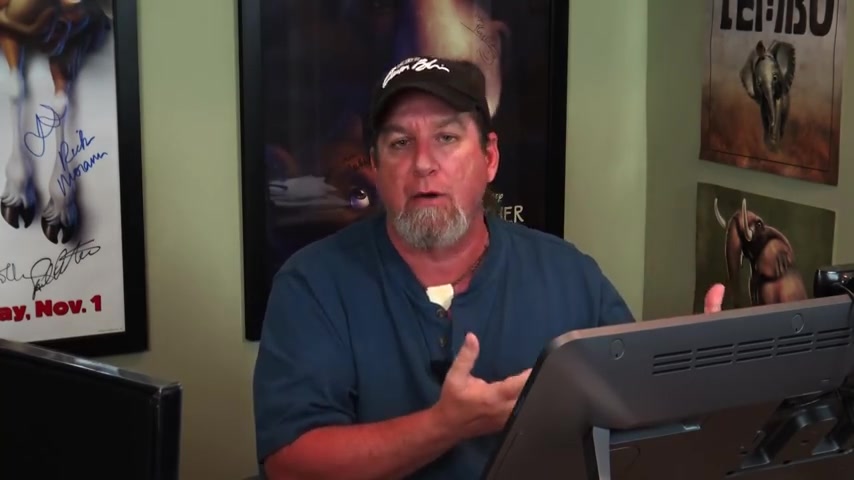
But if you have a nice clear soil hou to start with , then the viewer doesn't have to fight hard if everything's all contained inside of a blob and everything's overlapping .
You know , me , me going like this towards the camera is not as clear as you seeing me doing this .
OK .
That's a much clearer silhouette .
And that's the idea that I'm trying to get across , make sure that the silhouette is also helping to tell the story of whatever that pose might be .
OK ?
The other thing I always try to do um and this really comes from my , my Disney days as well is I try to find personality and emotion in my drawings .
If you can give that , give a little bit of character , we as humans , we automatically or most of us do anyway , we automatically connect with animals and we , we project emotion onto them , we project character onto them .
And so as an artist , I try to do that naturally , I do that naturally with animals .
And so when I'm drawing them , I try to do that .
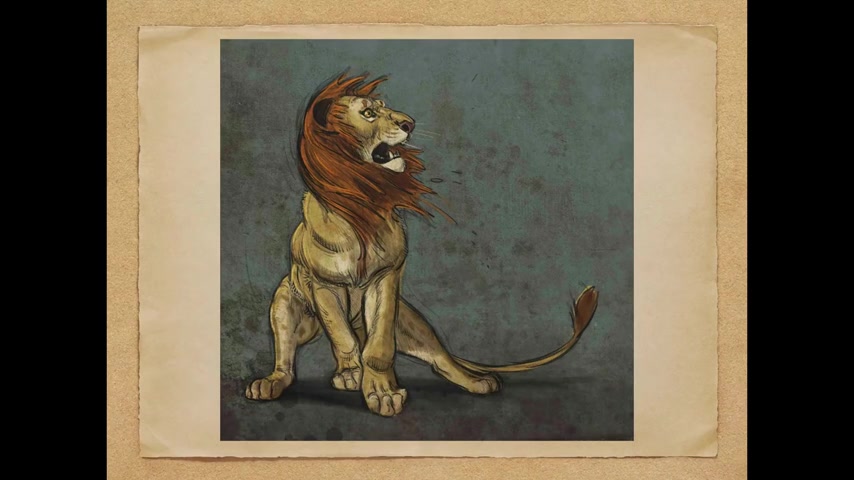
And so in this case , you know , here's a lion that's being threatened by something and you can see he's backing up and I wanted to show some terror .
I wanted to show some personality and I wanted to show some emotion in his eyes .
Look , also look at the line of action that I'm drawing through here just to go back to another point , starting with the tail and moving up through the body .
Also in these drawings here , these are a bit more cartoony .
But in , in doing these drawings , I was trying to find expressive poses and because they're baby Asian elephants , which can be extremely playful .
They're like , they're like puppies .
I wanted to get that idea across .
And so with each pose , with these , each expression , with each attitude , I wanted it to look like fun .
I wanted them to feel like toddlers .
I wanted the viewer to kind of project the idea of a of a of a young toddler .
And so that's what I tried to do when I did these drawings .
The other thing too , people will get caught up just in the details and you know , drawing when I'm drawing animals , I'm looking for shape .
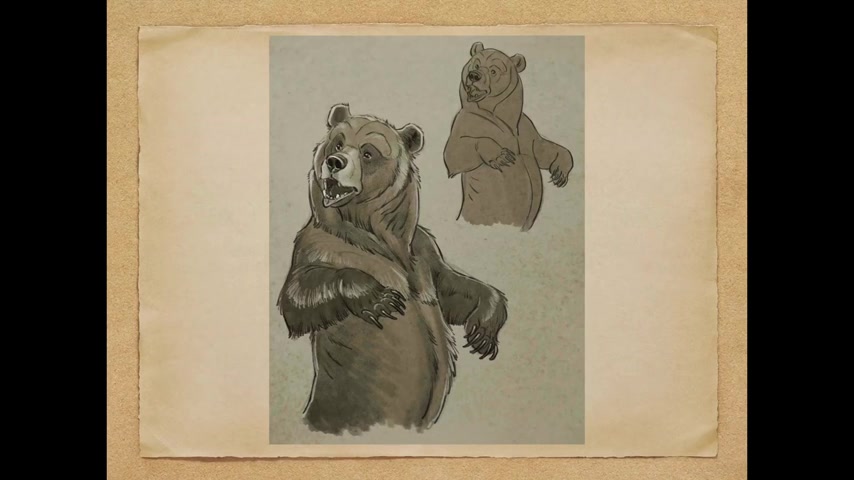
I'm looking for , you know , I never get in there as detailed as drawing hair , getting in there and drawing hair and hair and hair .
So one of the things I recommend is just being tasteful with it .
You can draw a few breaks in the edges of hair , you can show um if you're shading with a pencil , maybe draw some of your shading in the direction of the fur , but you don't need to draw every strand of hair .
It's just not important .
So here , if you look at the bear in the upper right , that's just straight line drawing and what I've done and the one on the lower left and I found , I found places to break up the fur to break up the line work .
So you get a sense of fur without drawing every single hair in the bear , every single hair in the bear .
That sounds funny .
Ok .
Next , um when I go out and dr animals on location , one of the things I love to do is bring my water colors .
And um I , I really recommend it .
Um If you don't paint , give it a shot , that's another thing I recommend is get out of your comfort zone and try some things that you've never done before .
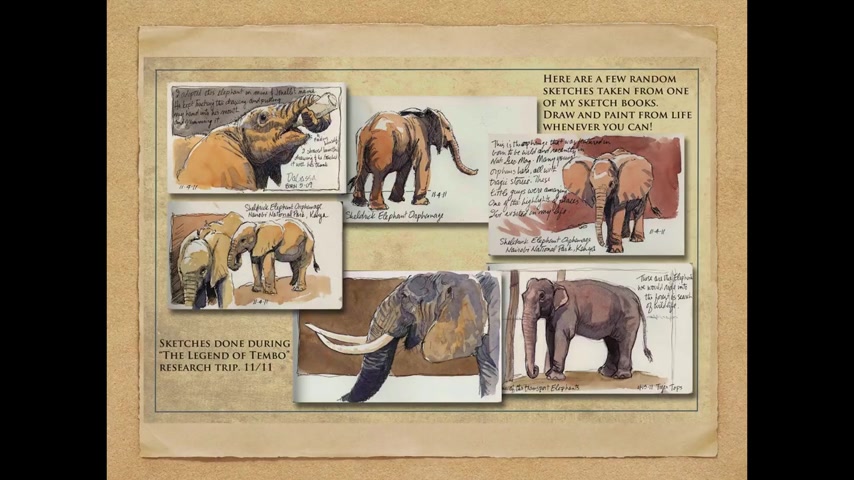
Um These are some drawings that I did when I was in Africa , I went to a little elephant orphanage and I sat there and I sketched the sketched the elephants .
Um The one thing that washes will do for you , the color washes is what I mean .
These broad swatches of color thrown down very quickly is that it fills in details .
It suggests details that aren't there these drawings , if you see them without the color are very quick , very sparse .
There's not a lot to them , but once I throw some color in there , it holds , holds them together a little bit better and gives them a bit of a boost .
And so I'm always looking um very quickly to throw down some color uh to throw down some value , something that will give that drawing just a little bit more edge , a little bit more interest .
Um This is another thing you know when you're drawing , when if you look at .
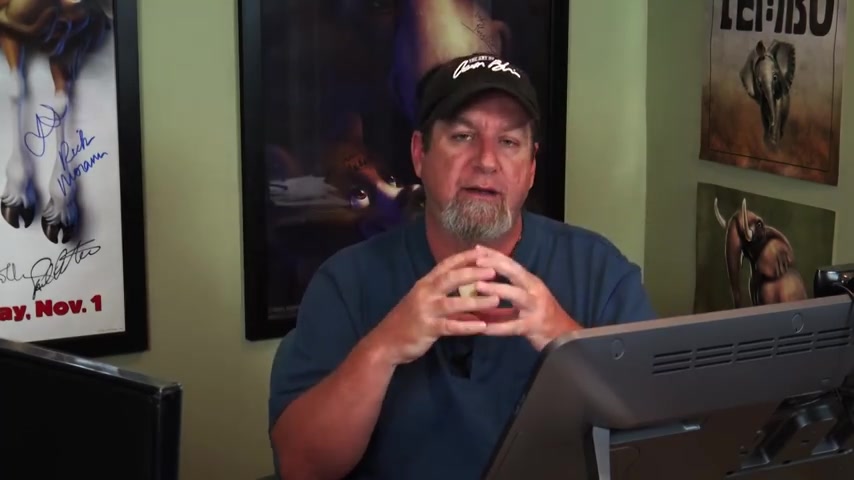
So take , for instance , the silhouette , if you look at an animal that and you and you're drawing that and the silhouette is equally complex , all the way around that drawing will become boring .
Uh The same with the interior , it doesn't even have to be the silhouette .
If you end up with a drawing that on the interior , every , you know , you have equal amounts of detail and all this all over the place , it becomes very boring .
So what I do in my drawing is I try to find places where I can be very simple and quiet .
And then other places where I can add some simplicity , it's just like music .
If you think about music , music , good music isn't just ba ba , ba , ba , ba , ba , ba ba , that's just boring .
But music has gaps and it has , it has highs and it has lows and it has notes that go up and down and they go all over the place .
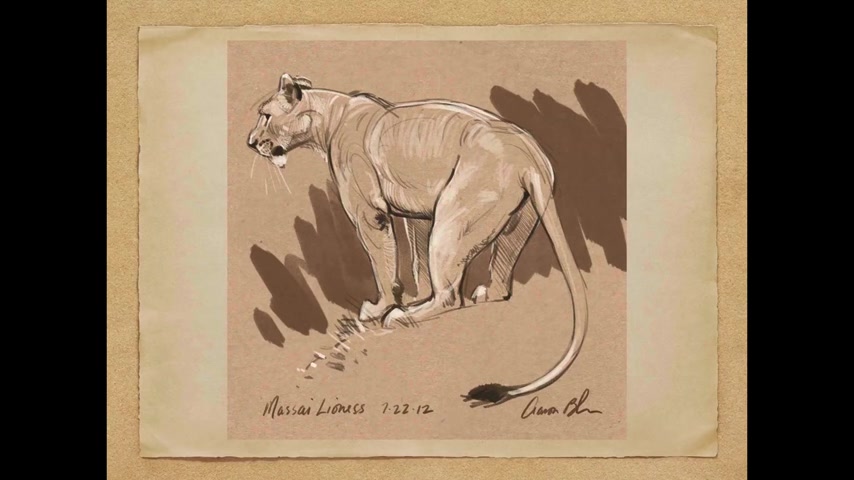
And if you think of drawing in terms of music , then you're gonna start to understand what I'm talking about , what I'm talking about in this drawing , for instance , even though it seems obvious as you go down the back of the animal of the lioness , it's a very simple line of action that starts in the tail and goes up along the back , very little disturbance and goes right out through the nose .
But then as you get underneath the animal , there's a lot of complexity with the legs and the , the anatomy and all of that .
But it , it helps , it helps tell the story of this pose in a more interesting way .
If you look at the body itself , there's a nice big quiet open area set against the details of the head and face and shoulders .
Like I said , it seems obvious in this drawing , but I could have drawn any pose of this line in , in ways that it wouldn't have been that clear .
And so I purposely chose this pose in order to hit some of these quiet and not so quiet areas .
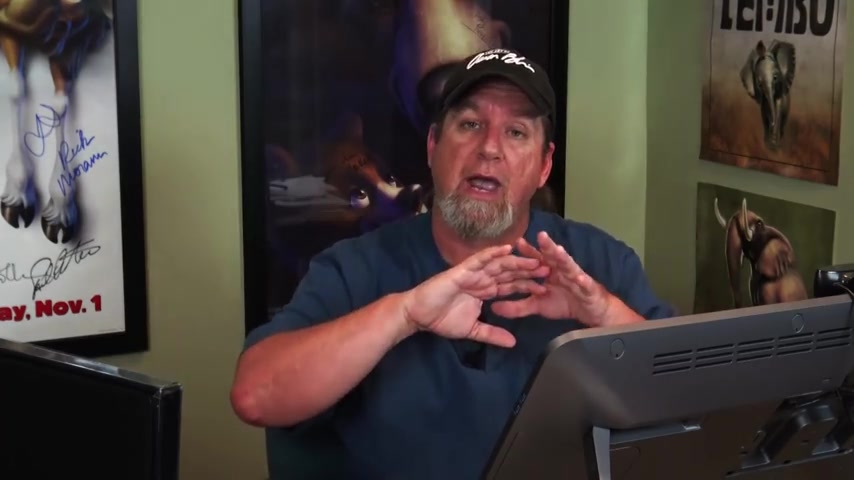
The other thing I like to do um is I love to work on a mid to paper .
Strathmore uh makes a great pad that's gray or uh it's a warm gray .
Also , you have two that are one's cool and one's uh warm gray .
Um And I love to work not only with a , you know , a pen or a pencil , but also come in with a light color and you can pull light values out .
It'll just give you a little bit of a , a better edge .
These are some sketches that I did at a bird sanctuary of a bald eagle .
And I happen to have uh a white ball point pen .
It's a , it's a pen made by jelly roll .
If you're interested , the jelly starting with a G not AJ .
And um , and you can see that , you know , adding that white pen just gives it a little bit better edge .
And here are some sketches that I did of a lioness .
And once again , you know , I , I could have done just left it with just the , the regular dark line , but going in there with the lighter pin with the , the light value .
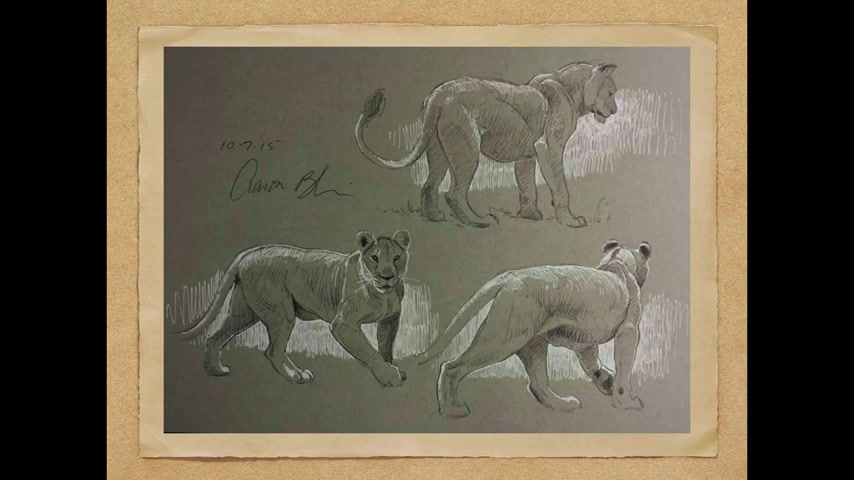
Now all of a sudden you've got three values and it just gives it a little bit more dimension , it gives a little bit more form and it just , they look better and I just think it's a little bit more tasteful .
So that's what I think about .
That's kind of all in a nutshell .
What I think about when I go out and I draw animals , I can talk till the cows come home , but you really will not get better unless you get out there and you do it and you just draw and you suffer through bad drawings and but also do your research , understand what you're drawing before you start to draw it .
Um You know , all of this , these aren't things that someone taught me .
These are things that I've gone out and I've discovered .
OK .
So you'll discover your own methods as well if you just get out there and do it .
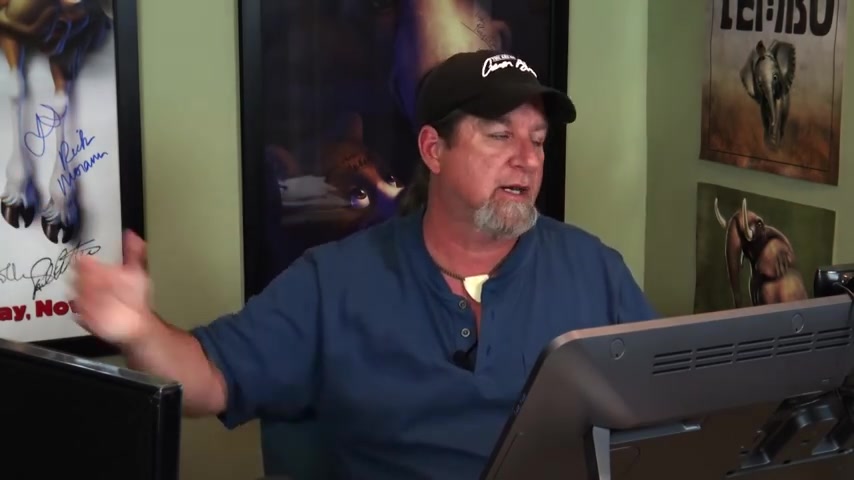
So whether you're drawing your dog or your cat or your mouse or your hamster or your gerbil or you're going out to the beach and you're drawing seagulls or you're going to the zoo and you're drawing elephants and lions , take some of these methods that I've told you and put them to work and see if they work for you .
I'd love to hear from you .
I'd love to see your drawings .
So anyway , I hope this helps .
I hope you go out and have a great time drawing and I'll talk to you next time .
Thanks .
Bye .
Hey , thanks for watching .
If you like what you saw , please hit the red subscribe button down below , spread the word .
And also if there's something that you're not seeing that you'd like to see , let us know we'd love to hear from you .
Thanks a lot .
Are you looking for a way to reach a wider audience and get more views on your videos?
Our innovative video to text transcribing service can help you do just that.
We provide accurate transcriptions of your videos along with visual content that will help you attract new viewers and keep them engaged. Plus, our data analytics and ad campaign tools can help you monetize your content and maximize your revenue.
Let's partner up and take your video content to the next level!
Contact us today to learn more.